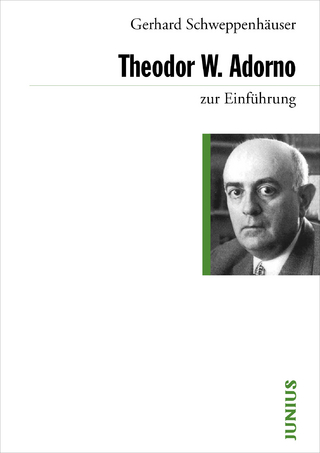
Adorno and the Ban on Images
Seiten
2021
Bloomsbury Academic (Verlag)
978-1-350-12920-7 (ISBN)
Bloomsbury Academic (Verlag)
978-1-350-12920-7 (ISBN)
This book upends some of the myths that have come to surround the work of the philosopher Theodor W. Adorno – not least amongst them, his supposed fatalism.
Sebastian Truskolaski argues that Adorno’s writings allow us to address what is arguably the central challenge of modern philosophy: how to picture a world beyond suffering and injustice without, at the same time, betraying its vital impulse. By re-appraising Adorno’s writings on politics, philosophy, and art, this book reconstructs this notoriously difficult author’s overall project from a radically new perspective (Adorno’s famous ‘standpoint of redemption’), and brings his central concerns to bear on the problems of today.
On the one hand, this means reading Adorno alongside his principal interlocutors (including Kant, Marx and Benjamin). On the other hand, it means asking how his secular brand of social criticism can serve to safeguard the image of a better world – above all, when the invocation of this image occurs alongside Adorno’s recurrent reference to the Old Testament ban on making images of God.
By reading Adorno in this iconoclastic way, Adorno and the Ban on Images contributes to current debates about Utopia that have come to define political visions across the political spectrum.
Sebastian Truskolaski argues that Adorno’s writings allow us to address what is arguably the central challenge of modern philosophy: how to picture a world beyond suffering and injustice without, at the same time, betraying its vital impulse. By re-appraising Adorno’s writings on politics, philosophy, and art, this book reconstructs this notoriously difficult author’s overall project from a radically new perspective (Adorno’s famous ‘standpoint of redemption’), and brings his central concerns to bear on the problems of today.
On the one hand, this means reading Adorno alongside his principal interlocutors (including Kant, Marx and Benjamin). On the other hand, it means asking how his secular brand of social criticism can serve to safeguard the image of a better world – above all, when the invocation of this image occurs alongside Adorno’s recurrent reference to the Old Testament ban on making images of God.
By reading Adorno in this iconoclastic way, Adorno and the Ban on Images contributes to current debates about Utopia that have come to define political visions across the political spectrum.
Sebastian Truskolaski is Lecturer in German and Comparative Literature at King’s College London, UK. His research focuses on the relationship between modern and contemporary art, literature and philosophy.
Acknowledgements
Prelude: Adorno and the Ban on Images
Chapter One: Imageless Materialism
Part I: Materialism
Part II: Imagelessness
Chapter Two: Inverse Theology
Part I: Theology
Part II: Inversion
Chapter Three: Aesthetic Negativity
Part I: Aesthetics
Part II: Natural Beauty
Reprise: ‘Zum Ende’
Notes
Bibliography
Index
| Erscheinungsdatum | 15.01.2021 |
|---|---|
| Verlagsort | London |
| Sprache | englisch |
| Maße | 156 x 234 mm |
| Gewicht | 508 g |
| Themenwelt | Geisteswissenschaften ► Philosophie ► Philosophie der Neuzeit |
| Sozialwissenschaften | |
| ISBN-10 | 1-350-12920-8 / 1350129208 |
| ISBN-13 | 978-1-350-12920-7 / 9781350129207 |
| Zustand | Neuware |
| Haben Sie eine Frage zum Produkt? |
Mehr entdecken
aus dem Bereich
aus dem Bereich


